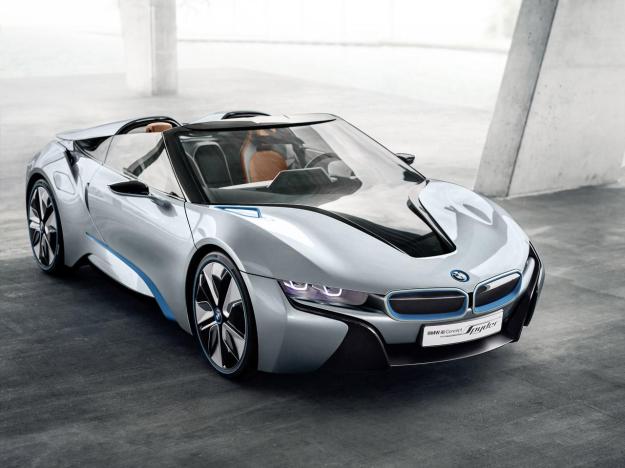 The BMW i8 Roadster (also known as Concept Spyder) hasn’t gone into production yet, but it’s already earned an award. This sexy supercar concept, which previews BMW’s long awaited plug-in hybrid halo car, won the North American Concept Car of the Year Award for for Best Production Preview Vehicle.
The BMW i8 Roadster (also known as Concept Spyder) hasn’t gone into production yet, but it’s already earned an award. This sexy supercar concept, which previews BMW’s long awaited plug-in hybrid halo car, won the North American Concept Car of the Year Award for for Best Production Preview Vehicle.
Some concept cars are just flights of fancy, but BMW’s decision to actually build the i8 Roadster landed it in the Production Preview category. Unlike the Oscars, the rules also allow for repeat performances: the i8 Roadster was named overall Concept Car of the Year in 2012.
The awards are doled out by a panel automotive journalists, who also pick a best Concept Truck, Specialty Concept, and Most Significant Concept.
The i8 is part of BMW’s i sub-brand of green vehicles. The brand has been gestating since the hardtop i8 and i3 electric city car were unveiled as concepts at the 2011 Frankfurt Motor Show.
With the Ferrari LaFerrari, McLaren P1, Porsche 918 Spyder, and Acura NSX on the way, you’d think we’d be over hybrid supercars, but when the i8 finally makes the transition from concept car to production car, it should be just as impressive as its rivals.
The plug-in hybrid powertrain, called eDrive, consists of a 223 horsepower turbocharged three-cylinder gasoline engine and a 131 hp electric motor. Combined, BMW says they will get the i8 from 0 to 100 kph (0 to 62 mph) in 4.6 seconds, while returning 94 mpg on the European cycle.
The i8 features a lithium-ion battery pack that gives it an electric-only range of 19 miles, but doesn’t upset the car’s 50:50 weight distribution.
Encasing the high tech powertrain is the equally astonishing LifeDrive architecture. It consists of a carbon fiber-reinforced plastic Life Module, which serves as a safety cage for the driver and passenger, and an aluminum Drive Module, which cradles the mechanical components.
The i8 is definitely worthy of an award, but we’ll still have to wait awhile to experience the more visceral side of its greatness.
The i8 Coupe will go on sale, at the earliest, in 2014, most likely as a 2015 model. The Roadster will follow it by at least a few months. Hopefully it will be worth the wait.
Editors' Recommendations
- BMW’s electric i4 will make its debut in 2021 with 530 hp, 300 miles of range
- 2019 Acura NSX vs. 2019 BMW i8


